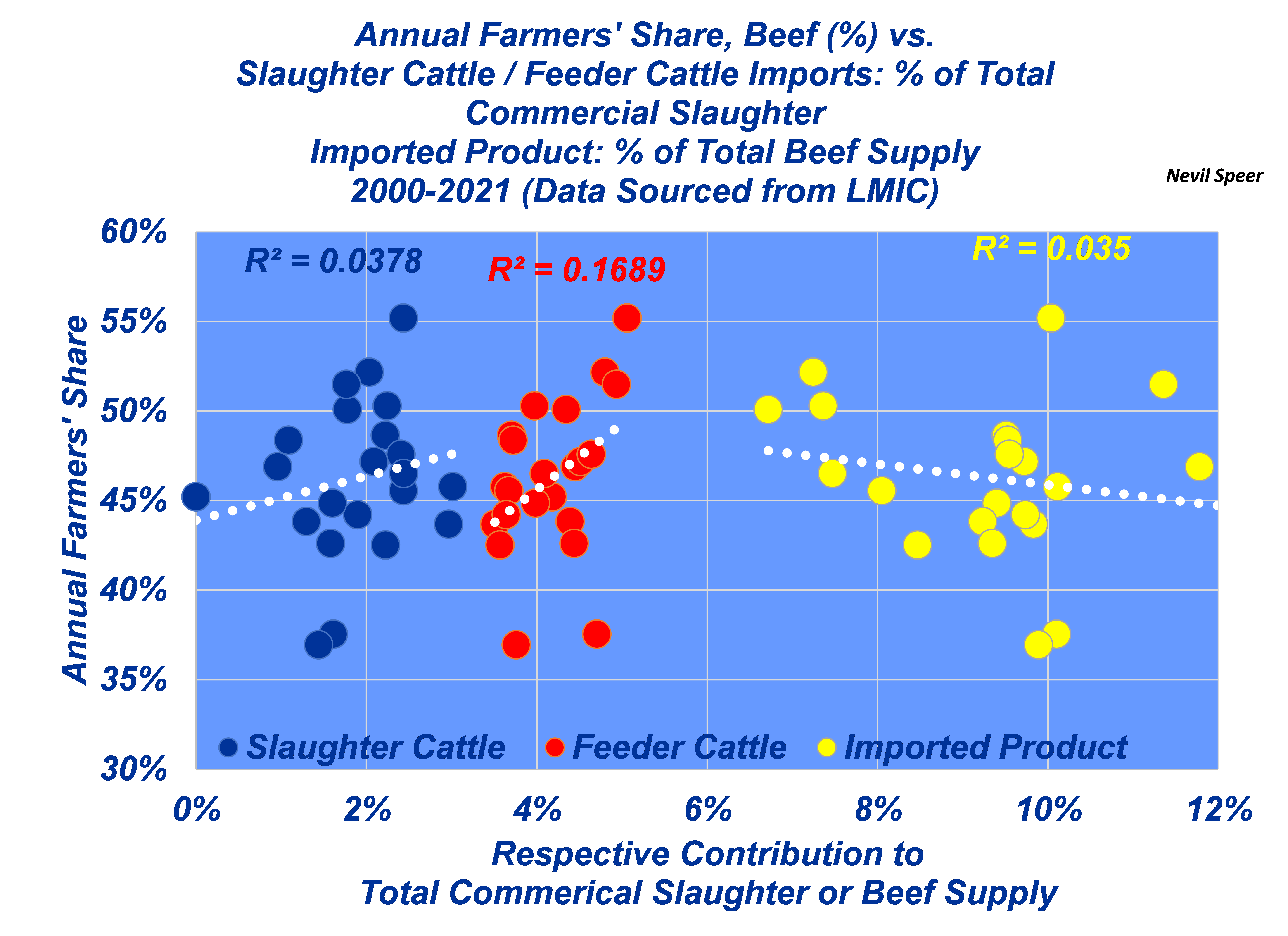Speer: Farmers’ Share Squishy (Self-Contradictory) Arguments

My previous column highlighted farmers’ share. While it may seemingly be important to monitor, it’s not a very good measure of industry viability. Most importantly, post-harvest investment by processors and/or retailers to increase beef demand may reduce the portion producers receive yet ultimately make them better off over the long run.
Nevertheless, it often serves as a talking point and subsequently leveraged to indicate all that’s wrong with the beef industry. For example, “…the [retail dollar] allocation has been completely reversed. Now the beef packers and retailers receive 60 cents of each consumer dollar and cattle farmers and ranchers share the remaining 40 cents.”
That fixed portrayal misrepresents reality. Farmers’ share has largely fluctuated between 40-to-50% from the mid-90s all the way through the second quarter of 2019 – just prior to the Tyson fire (highlighted in the first graph). Regardless of the number, what immediately follows is grumbling about the culprits (imports and market structure). So, what about those as they relate to farmers’ share?

First, imports; the logic being international sourcing reduces the portion available to U.S. producers: “…packers and retailer have a variety of sources from which to source the beef needed to meet the strong consumer demand. They can source imported beef from any of the 20 countries we import beef from. They can source light-weight calves from Canada and Mexico and feed them here to later produce more beef. They can source slaughter-ready cattle from Canada and Mexico and slaughter them here to produce more beef.”
The second graph highlights the relationship between farmers’ share (i.e. the cattle feeder) and respective sources of imported cattle and/or product. In the case of cattle, the trend is actually favorable. Correlation doesn’t mean causation, but the relationship between imported cattle and farmers’ share trends positively. Throw that argument out the window. Then comes imported product; the trend line is essentially flat, and there’s no solid relationship (the r-squared is essentially zero). So, that argument fails, too.

Second, the market argument: “…the price of beef is disconnected from the price of cattle. And that means demand for beef no longer comparably equates to a demand for cattle...” Hence, the cattle market isn’t responding to better demand and beef producers aren’t receiving their fair share of the retail dollar. That sounds meaningful, but it disregards the data.
In fact, I addressed that very issue last December: more spending equals better prices. Between 1980-and-1998 new spending on beef was flat (which subsequently prevented cattle prices from improving). But that turned around when the industry got serious about the consumer. Substantial gains have resulted from enduring commitment to better quality, improved consistency and enhanced promotion. As a result, beef spending has outpaced the competition since 2000. The beef industry has recaptured market share and cattle prices have risen as a result. (see chart.) Singular focus on farmers’ share misses that favorable outcome.

Most significantly, if one’s concerned about farmers’ share, the obvious solution is to get closer to the consumer. That is, the goal should be to encourage cattle feeders to increasingly market their cattle in a purposeful manner. Establishing marketing arrangements that capture extra value at the retail level is the best approach. Yet the very pundits worried about farmer’s share are promoting the opposite strategy; they’re simultaneously working to de-couple cattle from the consumer and commoditize the marketing system.
As noted, farmers’ share is an iffy indicator: “The lack of informational content in [farmer share] statistics suggests these data should not be used for policy purposes.” Brester et al., 2009. Worse yet, from a producer perspective, it’s further distorted by squishy (and self-contradictory) arguments.
Nevil Speer is an independent consultant based in Bowling Green, KY. The views and opinions expressed herein do not reflect, nor are associated with in any manner, any client or business relationship. He can be reached at nevil.speer@turkeytrack.biz.







